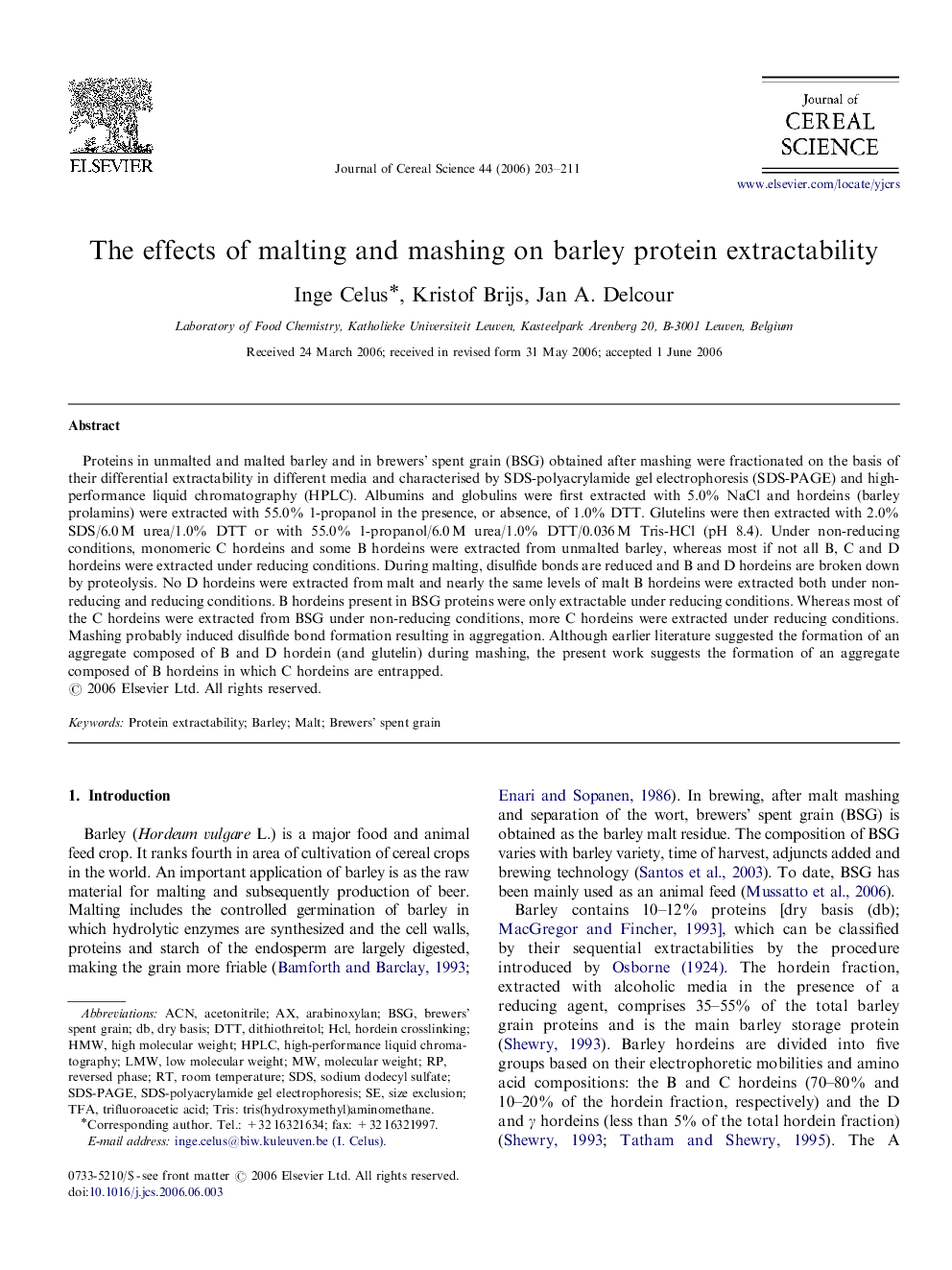| Article ID | Journal | Published Year | Pages | File Type |
|---|---|---|---|---|
| 4516720 | Journal of Cereal Science | 2006 | 9 Pages |
Proteins in unmalted and malted barley and in brewers’ spent grain (BSG) obtained after mashing were fractionated on the basis of their differential extractability in different media and characterised by SDS-polyacrylamide gel electrophoresis (SDS-PAGE) and high-performance liquid chromatography (HPLC). Albumins and globulins were first extracted with 5.0% NaCl and hordeins (barley prolamins) were extracted with 55.0% 1-propanol in the presence, or absence, of 1.0% DTT. Glutelins were then extracted with 2.0% SDS/6.0 M urea/1.0% DTT or with 55.0% 1-propanol/6.0 M urea/1.0% DTT/0.036 M Tris-HCl (pH 8.4). Under non-reducing conditions, monomeric C hordeins and some B hordeins were extracted from unmalted barley, whereas most if not all B, C and D hordeins were extracted under reducing conditions. During malting, disulfide bonds are reduced and B and D hordeins are broken down by proteolysis. No D hordeins were extracted from malt and nearly the same levels of malt B hordeins were extracted both under non-reducing and reducing conditions. B hordeins present in BSG proteins were only extractable under reducing conditions. Whereas most of the C hordeins were extracted from BSG under non-reducing conditions, more C hordeins were extracted under reducing conditions. Mashing probably induced disulfide bond formation resulting in aggregation. Although earlier literature suggested the formation of an aggregate composed of B and D hordein (and glutelin) during mashing, the present work suggests the formation of an aggregate composed of B hordeins in which C hordeins are entrapped.
